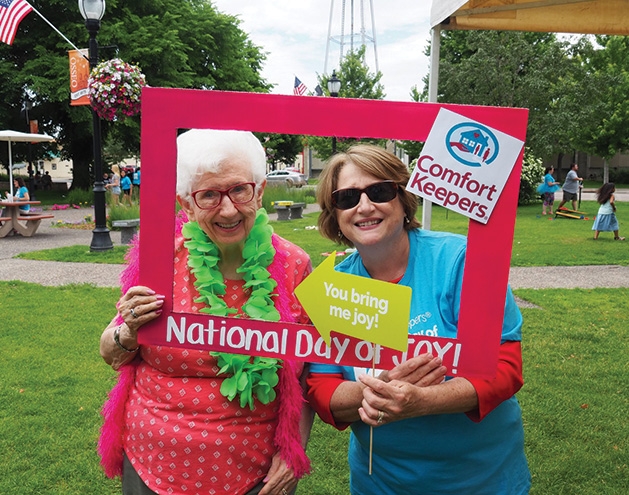
In 2005, 43.5 million people between the ages of 40 and 65 were unpaid caregivers. The same American Association of Retired Persons (AARP) survey says 43 percent of those people were caring for ill or incapacitated elderly parents.
While taking care of a loved one is commendable, it can take a toll. Caregivers can forget to look after themselves—leading to caregiver burnout. There are ways to prevent or alleviate this brand of stress, so we turned to local home health experts Comfort Keepers for insight. The Osseo branch’s owner, Jennifer Bauernfeind, says the key is to find the right help.
Maple Grove Magazine: What would you say to those who are afraid to reach out for help?
Jennifer Bauernfeind: You cannot fill from an empty cup. You have to take care of yourself first. If you’re sick because you’re so stressed out and burned out, you can’t take care of your loved one anymore ...
MG: What is an example of a way to start getting help?
JB: We provide services for just one day. Maybe a wife wants to get away to a wedding, and it’s too difficult to take the person she gives care to along. We will stay with that person while they go away. In some cases, we will go with them to the event to be that helping hand ... We have cared for people who have family members, who have gone on vacation, and there’s no family close by to take care of them.

MG: What about on an ongoing basis?
JB: Clients have a wide range of needs. They may need companionship, like having someone make meals for them, [provide] errand services, [take] them to appointments. Maybe they’re a fall risk, and they need someone in the home with them. Some of our clients are fairly mobile ... But maybe they don’t drive anymore, so they need that basic help. We want people to be out and about and enjoying life to whatever extent they can.
MG: What about people who require more care?
JB: We provide personal care, such as help with bathing, dressing, grooming and toileting. My agency is also licensed to provide private duty nursing care. That includes medication management and administration, catheter care, hands-on assistance [and assist with] different types of lifts to help people with severe mobility issues. Registered nurses on staff oversee the care.
MG: Sometimes clients are set in their ways. How do you work together?
JB: We involve the client in the care, not just do it for them, but do it with them. We believe seniors are one of our best resources, and they should have the opportunity to continue to make memories, reflect on those memories and enjoy everyday life as much as they can. We have caregivers think when they walk into a home, “How can we bring joy to that client today?” Sometimes we are the bright spot in their day or their week if they don’t have other family close by.
Symptoms of Caregiver Burnout
- Experiencing emotional, physical and mental exhaustion
- Feeling irritable
- Suffering from anger
- Withdrawing from friends and social events
- Losing interest in things once enjoyed
- Having periods of helplessness or hopelessness
- Altering eating habits
- Getting sick easily
- Facing thoughts of harming themselves or the person receiving care
Prevent Caregiver Burnout
- Be aware of changes in your level of tolerance, burnout and fatigue.
- Accept that you can't control everything.
- Make self-care a priority: exercise, meditate, laugh and breathe.
- Spend time with family and friends.
- Join a support group.
- Write in a journal.
Comfort Keepers
524 Central Ave., Osseo
763.273.4207
Facebook: Comfort Keepers of Maple Grove & Osseo
Information is available at:
The Family Caregiver Alliance Online Support Groups
AARP & Alzheimer’s Association Community Resource Finder
U.S. Administration on Aging









